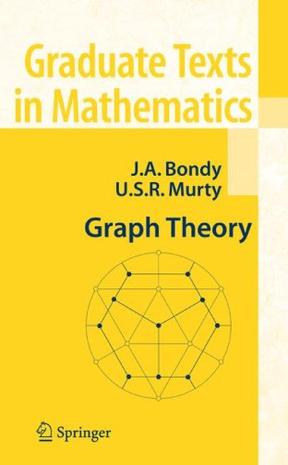-

神圣的数
《神圣的数:数字背后的神秘含义》由米兰达·伦迪编著。数字出现在我们生活的各个方面。一直以来,我们通常认为自己能够使用那些的简单数字。伦迪解释了为什么毕达哥拉斯的思想能引起后人的共鸣,她还大致介绍了从1到12这些数字所特有的含义:比如说,为什么生命和5相关,圆周和11有联系。 -

实变函数与泛函分析基础
本次修订是在第二版的基础上进行的,作者根据多年来的使用情况以及数学的近代发展,做了部分但是重要的修改。《实变函数与泛函分析基础(第3版)》共11章:实变函数部分包括集合、点集、测度论、可测函数、积分论、微分与不定积分;泛函分析则主要涉及赋范空间、有界线性算子、泛函、内积空间、泛函延拓、一致有界性以及线性算子的谱分析理论等内容。 这次修订继续保持简明易学的风格,力图摆脱纯形式推演的论述方式,着重介绍实变函数与泛函分析的基本思想方法,尽量将枯燥的数学学术形态呈现为学生易于接受的教育形态;同时,补充了一些现代化的内容,如“分形”的介绍。 《实变函数与泛函分析基础(第3版)》可作为高等院校数学类专业学生的教学用书,也可作为自学参考书。 -

Fourier Analysis on Number Fields (Graduate Texts in Mathematics)
The general aim of this book is to provide a modern approach to number theory through a blending of complementary algebraic and analytic perspectives, emphasizing harmonic analysis on topological groups. The more particular goal is to cover John Tate's visionary thesis, giving virtually all of the necessary analytic details and topological preliminaries--technical prerequisites that are often foreign to the typical, more algebraically inclined number theorist. While most of the existing treatments of Tate's thesis are somewhat terse and less than complete, our intent is to be more leisurely, more comprehensive, and more comprehensible. The text addresses students who have taken a year of graduate-level course in algebra, analysis, and topology. While the choice of objects and methods is naturally guided by specific mathematical goals, the approch is by no means narrow. In fact, the subject matter at hand is germane not only to budding number theorists, but also to students of harmonic analysis or the representation theory of Lie groups. Moreover, the work should be a good reference for working mathematicians interested in any of these fields. Specific topics include: topologcial groups, representation theory, duality for locally compact abelian groups, the structure of arithmetic fields, adeles and ideles, an introduction to class field theory, and Tate's thesis and applications. -

Graph Theory (Graduate Texts in Mathematics)
The primary aim of this book is to present a coherent introduction to graph theory, suitable as a textbook for advanced undergraduate and beginning graduate students in mathematics and computer science. It provides a systematic treatment of the theory of graphs without sacrificing its intuitive and aesthetic appeal. Commonly used proof techniques are described and illustrated. The book also serves as an introduction to research in graph theory. -

工科数学分析
《普通高等教育"十一五"国家级规划教材•工科数学分析(下)》共六章,包括多元函数微分学,多元函数积分学,第二型曲线积分和第二型曲面积分、向量场,无穷级数,复变函数初步,微分几何基础知识。每章后有供自学的综合性例题,并以附录形式开辟了一些新知识窗口。 -

无处不在的分形
《无处不在的分形(第2版)》主要内容:I acknowledge and thank many people for their help with this book. In particular I thank Alan Sloan, who has unceasingly encouraged me, who wrote the first Collage software, and who so clearly envisioned the application of iterated function systems to image compression and communications that he founded a company named Iterated Systems Incorporated. Edward Vrscay, who taught the first course in deterministic fractal geometry at Georgia Tech, shared his ideas about how the course could be taught, and suggested some subjects for inclusion in this text. Steven Demko, who collaborated with me on the discovery of iterated function systems, made early detailed proposals on how the subject could be presented to students and scientists, and provided comments on several chapters. Andrew Harrington and Jeffrey Geronimo, who discovered with me orthogonal polynomials on Julia sets. My collaborations with them over five years formed for me the foundation on which iterated function systems are built. Watch for more papers from us! Les Karlovitz, who encouraged and supported my research over the last nine years, obtained the time for me to write this book and provided specific help, advice, and direction. His words can be found in some of the sentences in the text. Gunter Meyer, who has encouraged and supported my research over the last nine years. He has often given me good advice. Robert Kasriel, who taught me some topology over the last two years, corrected and rewrote my proof of Theorem 7.1 in Chapter II and contributed other help and warm encouragement. Nathanial Chafee, who read and corrected Chapter II and early drafts of Chapters III and IV. His apt constructive comments have increased substantially the precision of the writing. John Elton, who taught me some ergodic theory, continues to collaborate on exciting research into iterated function systems, and helped me with many parts of the book. Daniel Bessis and Pierre Moussa, who are filled with the wonder and mystery of science, and taught me to look for mathematical events that are so astonishing that they may be called miracles. Research work with Bessis and Moussa at Saclay during 1978, on the Diophantine Moment Problem and Ising Models, was the seed that grew into this book. Warren Stahle, who provided some of his experimental research results.